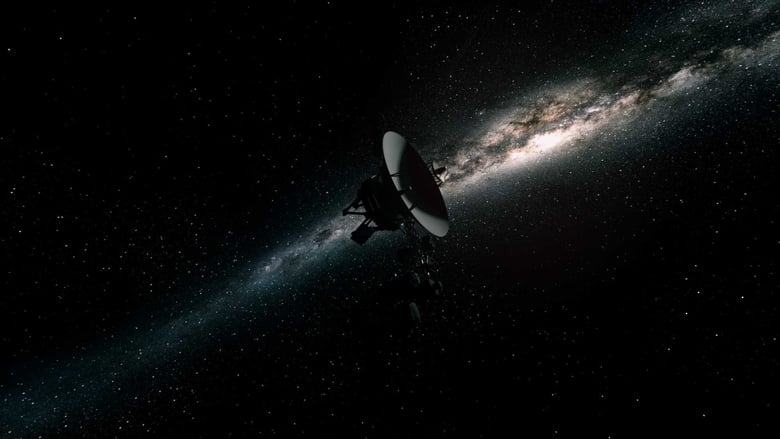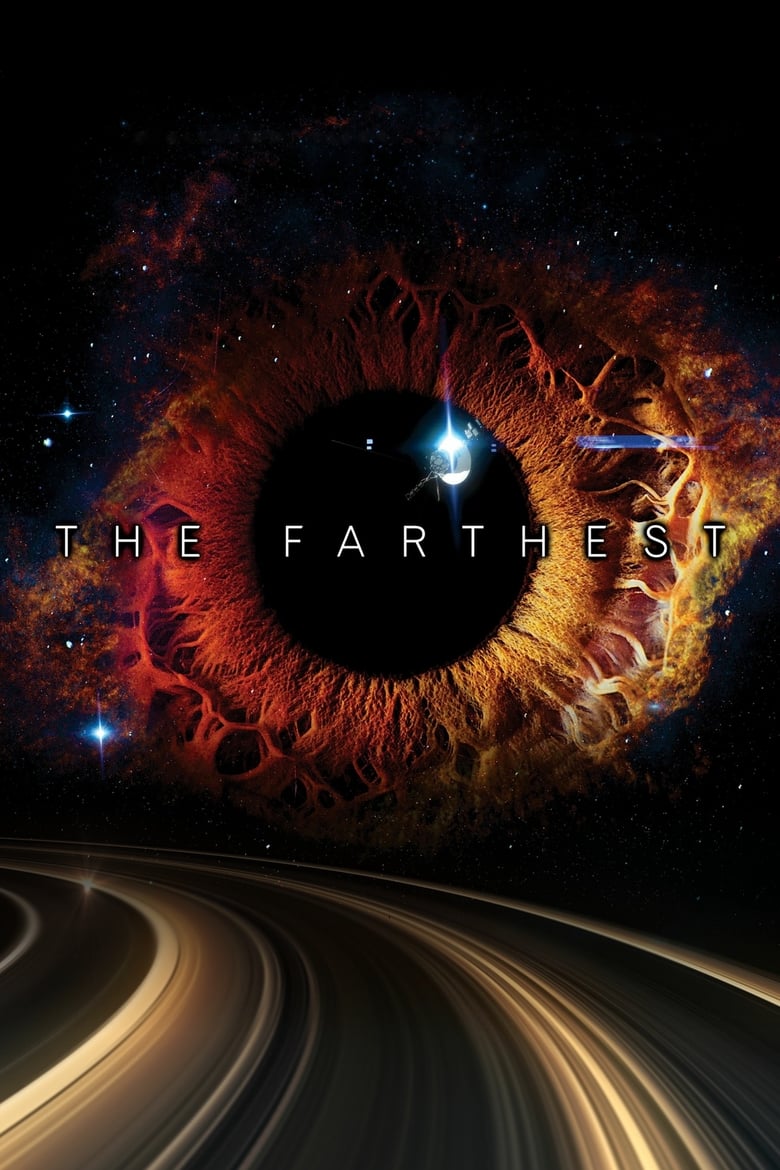

The Farthest
12 billion miles and counting...
Genres
Overview
The captivating tales of the people and events behind one of humanity's greatest achievements in exploration: NASA's Voyager mission.
Details
Budget
$0
Revenue
$0
Runtime
121 min
Release Date
2018-03-15
Status
Released
Original Language
English
Vote Count
61
Vote Average
7.762
Carl Sagan
Self (archive footage)
John Casani
Self
Lawrence Krauss
Self
Carolyn Porco
Self
Timothy Ferris
Self
Edward Stone
Self
Nick Sagan
Self
Larry Soderblom
Self
Charley Kohlhase
Self
Fran Bagenal
Self
James F. Bell
Self
Frank Locatell
Self
Suzanne Dodd
Self
Jon Lomberg
Self
Heidi Hammel
Self
Candy Hansen
Herself
Andrew Ingersoll
Himself
Dave Linick
Himself
Fernando Peralta
Himself
Linda J. Spilker
Herself
Tom Spilker
Himself
Janet Sternberg
Herself
Amahl Drake
Herself
Don Gurnett
Himself
Stamatios Krimigis
Himself
Linda Morabito
Herself
Bradford A. Smith
Self - Imaging Science Team Leader
Richard John Terrile
Self
Frank Drake
Self
7.6
In the Shadow of the Moon
Archival material from the original NASA film footage – much of it seen for the first time – plus interviews with the surviving astronauts, including Jim Lovell, Dave Scott, John Young, Gene Cernan, Mike Collins, Buzz Aldrin, Alan Bean, Edgar Mitchell, Charlie Duke and Harrison Schmitt.
2007-01-19 | en
7.5
Cassini's Grand Finale
To help visualize the dramatic final chapter in Cassini's remarkable story, NASA's Jet Propulsion Laboratory produced this short film that features beautiful computer-generated animation, thoughtful narration and a rousing score. Producers at JPL worked with filmmaker Erik Wernquist, known for his 2014 short film "Wanderers," to create a stirring finale video befitting one of NASA's most successful missions of exploration.
2017-04-07 | en
7.8
For All Mankind
A testament to NASA's Apollo program of the 1960s and '70s. Composed of actual NASA footage of the missions and astronaut interviews, the documentary offers the viewpoint of the individuals who braved the remarkable journey to the moon and back.
1989-11-01 | en
7.7
National Geographic: Journey to the Edge of the Universe
In one single, epic camera move we journey from Earth's surface to the outermost reaches of the universe on a grand tour of the cosmos, to explore newborn stars, distant planets, black holes and beyond.
2008-12-06 | en
6.4
Space Station 3D
Some 220 miles above Earth lies the International Space Station, a one-of-a-kind outer space laboratory that 16 nations came together to build. Get a behind-the-scenes look at the making of this extraordinary structure in this spectacular IMAX film. Viewers will blast off from Florida's Kennedy Space Center and the Baikonur Cosmodrome in Russia for this incredible journey -- IMAX's first-ever space film. Tom Cruise narrates.
2002-04-17 | en
7.2
Roving Mars
Join the Mars rovers Spirit and Opportunity for an awe-inspiring journey to the surface of the mysterious red planet.
2006-01-27 | en
6.8
Lunar
In the year 1957 the cold war expands to space. The Soviet-Union sends Sputnik as the first manmade object into earth-orbit. 3 years later Yuri Gagarin enters space as the first man in space. The so called "Space Race" seems to be decided. But in 1961 President Kennedy promised to send American Astronauts to the Moon. The Apollo Project was born. A space ship had to be built that is strong enough to escape earth's gravitation, land on the moon and bring the crew safely back to earth. Motion Designer Christian worked with his brother and Composer Wolfgang for 18 months on this shortfilm. The foundation were thousands original NASA photographies, taken from the Astronauts during the Apollo Missions, which were released in September 2015. It is an animated collage using different techniques to bring the stills to life.
2017-05-11 | en
5.5
An Article of Hope
An inspiring documentary film that details the life mission of Col. Ilan Ramon, the first and only Astronaut from Israel, who blasted off on the Shuttle Columbia. He carries with him a cherished artifact, a miniature Torah scroll, that had survived the Holocaust. From the "Depths of hell to the heights of space," his simple gesture would serve to honor the hope of a nation and to fulfill a promise made to generations past and future.
2011-05-01 | en
6.0
Shuttle Discovery's Last Mission
With more than 27 years of service, the space shuttle Discovery has clocked more time in space than any other shuttle. She has flown more than 148 million miles, and has become one of the most storied spacecraft in American history. Join us as we celebrate her remarkable past and follow her final flight: to the Smithsonian National Air and Space Museum. It's an emotionally charged mission full of logistical challenges. Discovery is a robust, but very fragile aircraft, and getting her to D.C. in one piece will require some innovative engineering.
2013-08-01 | en
5.0
Miniverse
What if you could get behind the wheel and race through space? We scale down the Solar System to the continental United States and place the planets along the way to better appreciate the immense scale of the Universe. See space as never before, with Mars looming over the Freedom Tower and Jupiter towering above the Lincoln Memorial. Join former astronaut Chris Hadfield - a YouTube sensation for his performance of David Bowie’s “Space Oddity” aboard the International Space Station - and his interstellar hitchhikers Michio Kaku and astronomers Derrick Pitts and Laura Danly. It’s a joyride from coast to coast - and from the sun to Pluto.
2017-04-17 | en
4.0
The Voyagers
In the summer of 1977, NASA sent Voyager 1 and Voyager 2 on an epic journey into interstellar space. Together and alone, they will travel until the end of the universe. Each spacecraft carries a golden record album, a massive compilation of images and sounds embodying the best of Planet Earth. According to Carl Sagan, “[t]he spacecraft will be encountered and the record played only if there are advanced space-faring civilizations in interstellar space. But the launching of this bottle into the cosmic ocean says something very hopeful about life on this planet.” While working on the golden record, Sagan met and fell madly in love with his future wife Annie Druyan. The record became their love letter to humankind and to each other. In the summer of 2010, I began my own hopeful voyage into the unknown. This film is a love letter to my fellow traveler. - Penny Lane
2010-09-25 | en
5.2
Elon Musk: The Real Life Iron Man
Discover the meteoric rise of Elon Musk, the man who is transforming the way we think about travel technology through electric cars, the Hyperloop, and revolutionary ideas on how we live through artificial intelligence and colonizing Mars.
2018-12-04 | en
7.2
Destiny in Space
Travel alongside the astronauts as they deploy and repair the Hubble Space Telescope, soar above Venus and Mars, and find proof of new planets and the possibility of other life forming around distant stars.
1994-01-17 | en
6.5
Mission to Mir
This film shows how far we have come since the cold-war days of the 50s and 60s. Back then the Russians were our "enemies". And to them the Americans were their "enemies" who couldn't be trusted. Somewhere in all this a young girl in Oklahoma named Shannon set her sights on becoming one of those space explorers, even though she was told "girls can't do that." But she did.
1997-10-17 | en
0.0
Planets of the Sun
An Educational Favorites VHS from the NATURE SERIES featuring Leonard Nimoy
1985-01-01 | en
7.4
Never Surrender: A Galaxy Quest Documentary
A feature-length documentary about the film Galaxy Quest and its legacy, celebrating its milestone 20th anniversary.
2019-11-26 | en
0.0
Apollo 17: Final Footprints On The Moon
The Apollo 17 mission was the final opportunity to collect first hand information about the history and origin of the Moon. This film looks at this historic mission through the eyes of those who participated in it. Including Commander Eugene Cernan, Lunar Module Pilot Harrison Schmitt, and Command Module Pilot Ron Evans.
2005-07-16 | en
6.7
Mars: One Day on the Red Planet
An epic journey around Mars — built from real satellite and rover data — revealing the red planet as you’ve never seen it before.
2020-01-05 | en
10.0
Destination: Pluto Beyond the Flyby
The New Horizons team examines the latest findings and imagery from Pluto and the fringes of our solar system revealing a world unlike any other we've seen before.
2016-09-23 | en
0.0
AzTechSat-1
NASA film documenting the launch and commissioning of AzTechSat-1, a pioneering one-to-one communications satellite in space.
2023-01-10 | es